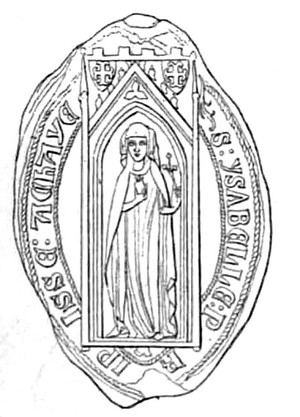 |
| By Gustave Léon Schlumberger (Sceau de l'Orient latin) via Wikimedia Commons |
During the Middle Ages, the Eastern Mediterranean was incredibly important in European politics. Since the start of the Crusades, the Christian rules of Europe had been setting up kingdoms and principalities throughout what is now the Balkans, Turkey, and the Holy Lands. And the ties were still strong between the western and eastern Empires. Isabella's father ruled an area called Achaea but his hold on it was tenuous. In fact, he had been captured (after he was found hiding under a haystack) and was more or less forced to concede.
As part of the subsequent agreements, Isabella was married at age 12 to Charles' son Philip, who died before the teenaged couple had any children. Isabella remained under Charles' authority. He finally died when she was in her mid-20s, and her brother-in-law Charles II escorted her to a new marriage with Florent of Hainaut a few years later. He gave them back her father's titles as Prince and Princess of Achaea. When Florent died a decade later, she married Philip of Savoy and was able to keep Achaea only as long as Charles allowed. Philip, who was at least 14 years younger than Isabella, nearly ran the place into the ground, which caused Charles to revoke their leadership.
Once they got back to Italy, Isabella left her wastrel husband and took her only child, the daughter of her second husband, to live in Germany. She died about four years later in her late forties.
For more about Isabella:
Isabella of Villehardouin on Medieval and Early Modern Women
Isabelle de Villehardouin, Princess of the Morea on Surprised by Time
No comments:
Post a Comment